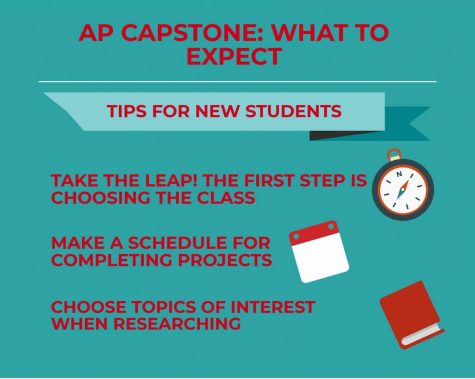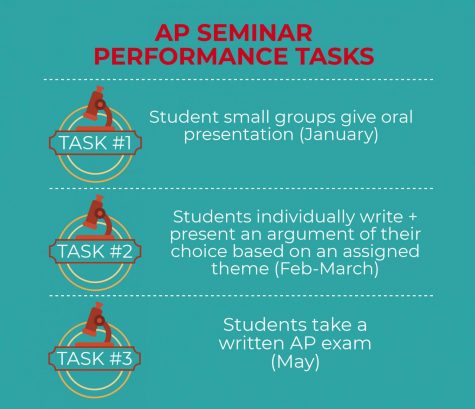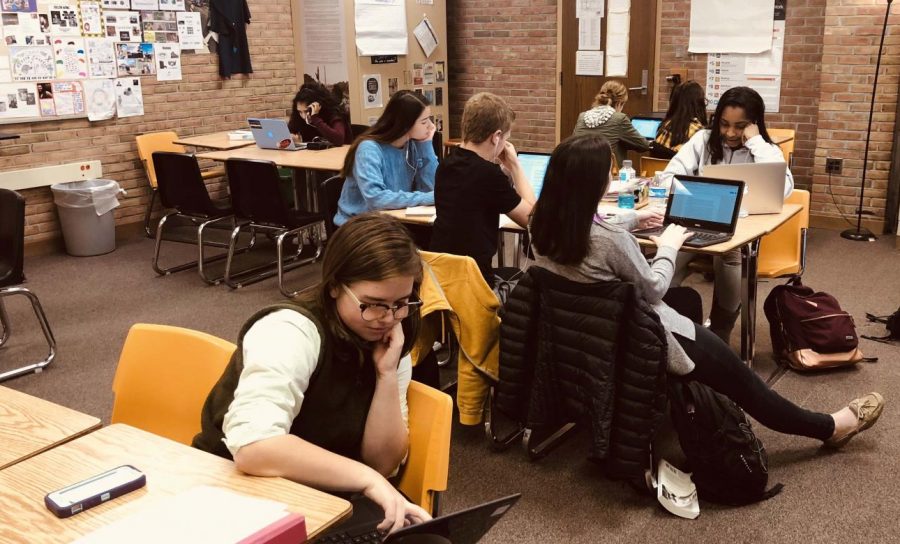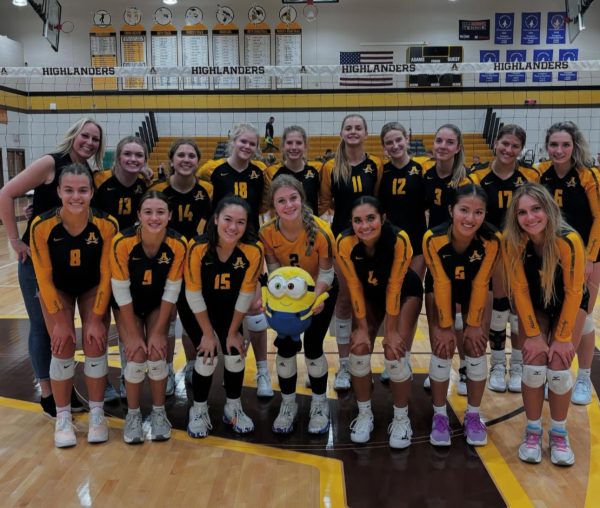Spotlight on AP Capstone
Students using their laptops to research sources.
Walking into the AP Seminar class at Adams is a new experience every time.
On a given afternoon, students might be gathered in a circle for a conversation on gentrification. The next day, the class could be having a discussion on the Myers-Briggs personality test, organized into groups based on their results. The course is a departure from the traditional classroom dynamic, and yet manages to avoid devolving into chaos. Teacher Jean Bolinger, who is in charge of Adams’ two AP Seminar classes, offers that the class’ flexibility is what makes it so unique. The advanced placement course is a new offering this year, and is part of the College Board’s AP Capstone program. Bolinger notes that although the class is going well, it has required an adjustment period.
“I think (one of the biggest challenges with the class) was students not knowing what it was,” said Bolinger.
It is easy for the AP Capstone program to seem mysterious. On the official College Board website, it is categorized as an “interdisciplinary” course, a vague term that does little to clear up confusion. A quick google search reveals that the majority of information available on the course comes from the College Board itself.
So what exactly is AP Capstone, and why did 31 Adams students choose to be guinea pigs for the program this year? The first thing to know about the AP Capstone program is that it spans two years, consisting of two separate courses: AP Seminar and AP Research. The goal of both classes is to immerse students in a college-level research process. At the end of the two years, students have the opportunity to earn an AP Capstone diploma. Students can earn the diploma by receiving an AP score of three or higher in AP Seminar and Research, as well as a score of three or higher on four additional AP courses of their choice. This requires students to take a total of at least six AP classes over their high school career. The Capstone diploma allows students to demonstrate academic mastery, provided they meet the requirements.

Quick tips from current AP Seminar students.
AP Seminar, the first of the two courses, is an introductory course designed to transition students into the program. Students work independently and in groups to present intelligent arguments based on research they gather. As with many other classes, quarter and semester grades are determined by teachers, based on assignments and presentations given throughout the school year. The class differs; however, in how the AP score is determined. Rather than taking a high-pressure, one-time exam in May, students are assessed periodically throughout the year. The score is based upon three performance tasks.
AP Research is taken in a students’ second year, and will run for the first time in the 2019-20 school year, as the first batch of AP Seminar students graduate into the next part of the program. This part of the curriculum gives students complete freedom to develop a research report on a topic they find interesting. They will conduct their own investigations and consult experts on their topic, ultimately finishing with their very own passion project.
As they navigate through the course, students in AP Seminar describe the skills they are already exercising: time management, independent researching, and writing being some of the most notable. The course also builds less obvious skills, like students’ ability to work well in a group. Many class activities center around discussions or small group work, and students have to learn how to bring their strengths to the table while incorporating those of their group members’ as well.
“There’s an emphasis on collaboration. It’s not just the teacher putting students into groups and being like, collaborate. It’s very student-driven,” said Bolinger.

Performance tasks that factor into students’ AP Score.
AP Seminar is a Bring Your Own Device (BYOD) class, meaning students bring their own electronic devices to conduct research. It is common to see students bent intently over their screens, sifting through databases until they find the perfect article. Perhaps in coming years, this is the type of independence we can expect to see more often in high school classrooms: students being given the liberty to learn on their own terms.
As the first quarter of the school year comes to a close, the first batch of AP Seminar students have already gathered a foundation of skills to be used in months to come. The future of the course may be uncertain, but students seem ready for the challenge.







